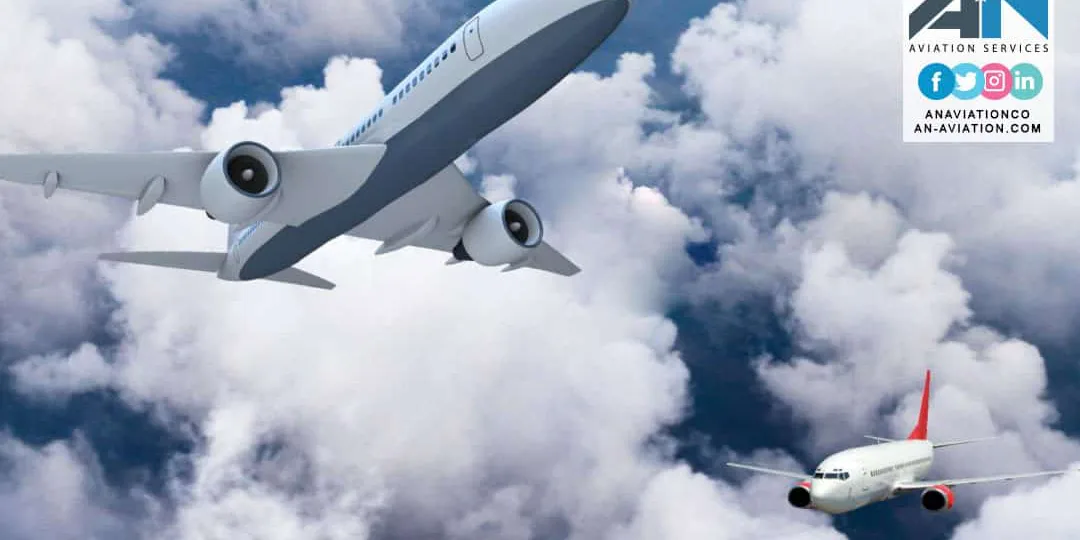
The skies are becoming increasingly crowded with aircraft, making safety a top priority for the aviation industry. Among the many systems designed to prevent accidents, the Airborne Collision Avoidance System (ACAS) stands out as a critical technology for ensuring mid-air collision prevention. This advanced system serves as a last line of defense, providing real-time alerts to pilots when two or more aircraft are at risk of coming dangerously close to one another.
In this blog, we will dive into what the ACAS is, how it works, its importance for flight safety, and the role it plays in modern aviation. Understanding systems like ACAS not only highlights the complexity of aviation but also reassures passengers that every measure is in place to make flying one of the safest modes of transportation.
What Is ACAS?
The Airborne Collision Avoidance System (ACAS) is an onboard safety system designed to monitor nearby aircraft and prevent mid-air collisions. It uses transponders and radar signals to track the positions and trajectories of surrounding aircraft, alerting pilots to potential collision risks.
ACAS doesn’t rely on external guidance, such as air traffic control, to function. Instead, it is completely independent and provides pilots with direct, real-time warnings when two aircraft are too close to one another. This makes it an essential tool for both controlled and uncontrolled airspace, where the risk of human error or communication issues might increase the likelihood of a collision.
How Does ACAS Work?
The ACAS operates by communicating with the transponders on other aircraft. A transponder is a device that sends and receives signals, allowing planes to detect one another’s presence. By analyzing these signals, ACAS calculates the position, altitude, and direction of nearby aircraft.
If the system determines that two aircraft are on a collision course, it issues a traffic advisory (TA) or a resolution advisory (RA) to the pilots:
- Traffic Advisory (TA): The system warns the pilots about the presence of another aircraft in close proximity, allowing them to visually locate it. This advisory serves as an alert to prepare for possible action.
- Resolution Advisory (RA): If the situation becomes more critical, the ACAS provides specific instructions to the pilots, such as climbing, descending, or maintaining altitude to avoid a collision.
One of the key features of ACAS is its ability to ensure coordinated responses. For example, if two aircraft are on a collision path, ACAS will instruct one pilot to climb while directing the other to descend, avoiding confusion and ensuring that both pilots take complementary actions.
ACAS vs. TCAS: Understanding the Difference
It’s common to hear ACAS and TCAS used interchangeably, but there’s a subtle distinction. ACAS is a broad term referring to any collision avoidance system onboard an aircraft, while TCAS (Traffic Collision Avoidance System) is a specific implementation of ACAS.
TCAS is widely used in commercial aviation and operates based on international standards set by aviation authorities. TCAS versions, such as TCAS II, are designed to handle even the most complex traffic scenarios, making it the most recognized form of ACAS in the world today.
The Importance of ACAS in Aviation Safety
The introduction of ACAS has been a game-changer in the aviation industry, significantly enhancing safety during flight. Its primary goal is to act as a safety net in situations where other systems, such as air traffic control or pilot communication, fail to prevent a potential collision.
Mid-air collisions, though rare, can have catastrophic consequences. ACAS helps reduce this risk by:
- Providing Independence: Unlike air traffic control, which relies on ground-based communication, ACAS works independently, allowing pilots to take immediate action even in remote or uncontrolled airspace.
- Enhancing Situational Awareness: By giving pilots a clear understanding of nearby aircraft positions, ACAS reduces the likelihood of mid-air collisions, especially in busy airspace.
- Acting as a Backup: ACAS serves as a fail-safe system in case of communication breakdowns, missed instructions, or human error.
Real-Life Applications of ACAS
ACAS has been instrumental in preventing collisions in real-world scenarios. For instance, in congested airspace near major international airports, the system continuously monitors the movement of multiple aircraft, providing pilots with precise instructions to avoid risky situations.
Additionally, ACAS is crucial during critical flight phases, such as ascent and descent, where aircraft are more likely to cross paths due to changes in altitude and airspace overlap. In such situations, the system acts as an extra layer of protection, ensuring smooth and safe operations.
The Role of ACAS in Modern Aviation
As air traffic continues to grow globally, the need for advanced safety systems like ACAS becomes even more critical. The system not only helps prevent mid-air collisions but also fosters trust in the aviation industry by demonstrating its commitment to passenger safety.
In the context of evolving technology, ACAS is being integrated with modern avionics systems to further improve its capabilities. For instance, some advanced versions of ACAS are now compatible with automatic dependent surveillance-broadcast (ADS-B), which provides even more accurate tracking of nearby aircraft.
Looking ahead, the development of next-generation ACAS systems is expected to incorporate artificial intelligence (AI) and machine learning, allowing the system to predict and prevent potential conflicts with even greater precision.
Conclusion: ACAS—A Pillar of Aviation Safety
The Airborne Collision Avoidance System (ACAS) is a cornerstone of modern aviation safety. By providing pilots with real-time alerts and guidance, it has significantly reduced the risk of mid-air collisions, ensuring safer skies for everyone.
As the aviation industry continues to evolve, systems like ACAS will remain essential for managing the challenges of increasing air traffic. By combining cutting-edge technology with a proactive approach to safety, ACAS not only protects lives but also reinforces the confidence passengers place in air travel every day.
For pilots, passengers, and air traffic controllers alike, the value of ACAS is clear—it’s a system that proves how far aviation has come in prioritizing safety and how much it will continue to achieve in the future.

